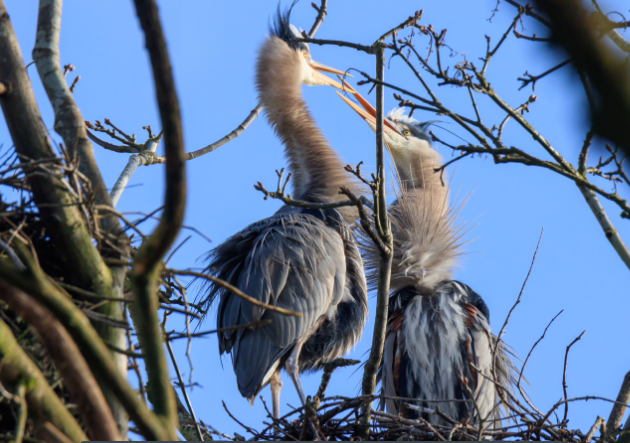
The Pacific Great Blue Herons are nesting again in Stanley Park for the 20th consecutive year.
They began returning February 21 to a colony located at the Park Board offices on Beach Avenue.
It’s one of North America’s largest urban heron colonies.
Last year, it is estimated there were 82 active nests in the colony, three fewer than in 2018, with 112 fledglings raised in 2019, 14 more than in 2018.
The Park Board Heron Cam is once again live-streaming with a birds-eye view of 40 nests until the end of the breeding season in August. Viewers can take control of the camera, zooming in on multiple nests, using different angles.
“The number of active nests and fledglings raised last year is consistent with previous years indicating the nesting site is favourable to the herons’ breeding success,” said Park Board Chair Camil Dumont.
“We encourage residents to check out our Heron Cam and watch throughout the breeding season as herons are born, raised, and fledged.”
The Heron Cam supports the Park Board’s Biodiversity Strategy and Vancouver Bird Strategy, and allows the Stanley Park Ecology Society (SPES) to better monitor and protect the health of the colony.
This year, the Park Board will also offer a moderated Facebook Live Q and A, where SPES staff will answer questions about the herons. SPES will set up a weekly in-person interpretation at the colony to answer questions and share colony news.
Those interested can follow the Park Board and SPES pages on Facebook to receive updates.
The Pacific Great Blue Heron is unique because it does not migrate. Their natural year-round habitat is the Fraser River delta which is under pressure from urban development, resulting in the loss of feeding and breeding grounds.
One-third of Great Blue Herons worldwide live around the Salish Sea and the Stanley Park colony is a vital part of the south coast heron population.



